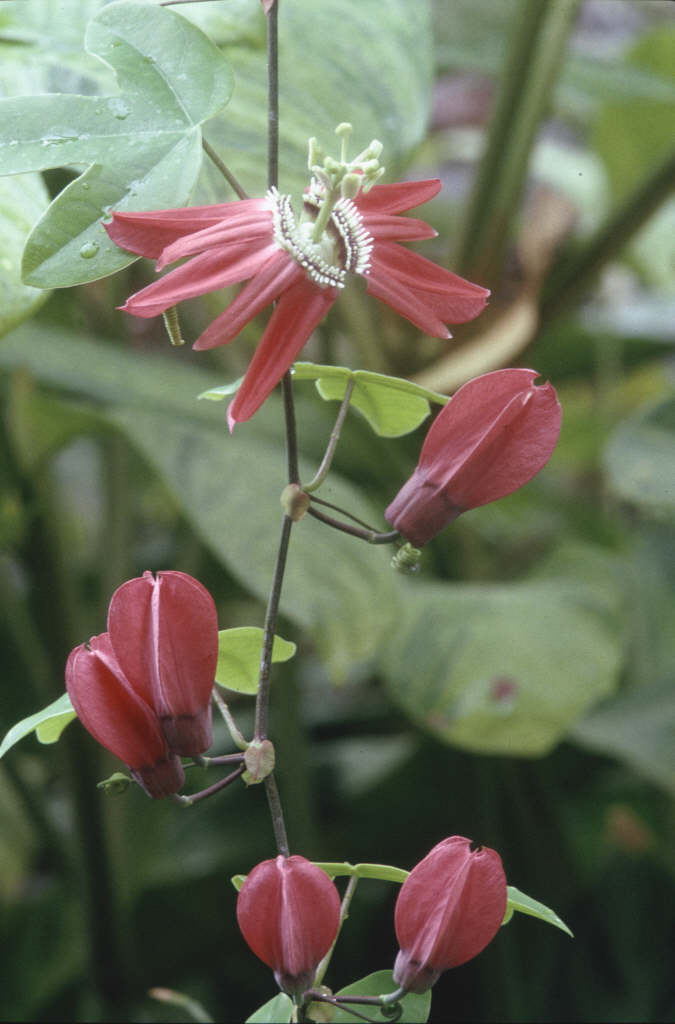Passiflora racemosa
red passion flower
An evergreen climber to 5m, with 3-lobed leaves and pendent racemes of crimson flowers to 12cm across, with dark purple and white coronal filaments followed by pale green fruits. The pulp in the fruits only can be eaten when they are fully ripe and yellow-orange. Unripe fruit is toxic

Buy this plant
Size
Ultimate height
4–8 metresTime to ultimate height
5–10 yearsUltimate spread
0.5–1 metresGrowing conditions
Moisture
Moist but well–drainedpH
Acid, Alkaline, NeutralColour & scent
| Stem | Flower | Foliage | Fruit | |
| Spring | Green | |||
|---|---|---|---|---|
| Summer | Red | Green | ||
| Autumn | Green | Green | ||
| Winter | Green |
Position
- Full sun
- Partial shade
Aspect
South–facing or East–facing
Exposure
Sheltered Hardiness
H1ABotanical details
- Family
- Passifloraceae
- Native to GB / Ireland
- No
- Foliage
- Evergreen
- Habit
- Climbing
- Potentially harmful
- Fruit are ornamental - not to be eaten. Wear gloves and other protective equipment when handling Pets: Fruit are ornamental - not to be eaten - see the HTA guide to potentially harmful plants for further information and useful contact numbers
- Genus
Passiflora are mostly tender tendril-climbing shrubs, with simple or palmately-lobed, generally evergreen leaves and showy flowers of distinctive structure with often colourful coronal filaments, followed by conspicuous fruits, edible in some species
- Name status
Correct
- Plant range
- Brazil
How to grow
Cultivation
Under glass grow in peat-free, loam-based potting compost in full light with shade from hot sun. Water freely when in growth and keep just moist in winter. May be grown outdoors in most fertile, moist but well-drained soils. Provide support for climbing stems and shelter from cold, drying winds
Propagation
Propagate by seed sown at 13 to 18°C in spring or root semi-hardwood cuttings in summer. Layering can be carried out in spring or autumn
Suggested planting locations and garden types
- Patio and container plants
- Wall side borders
Pruning
Pruning group 11 or pruning group 12 in early spring
Pests
May be susceptible to glasshouse red spider mite, scale insects and glasshouse whitefly
Diseases
May be susceptible to honey fungus (rarely) and a virus
Love gardening
Sign up to receive regular gardening tips, inspiration, offers and more
View our Privacy Policy
Get involved
The Royal Horticultural Society is the UK’s leading gardening charity. We aim to enrich everyone’s life through plants, and make the UK a greener and more beautiful place.